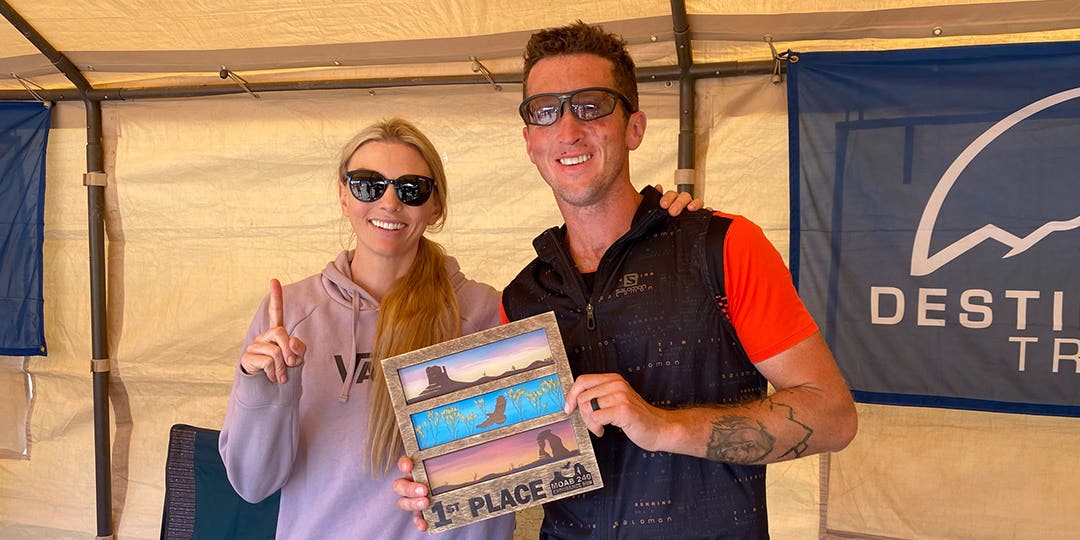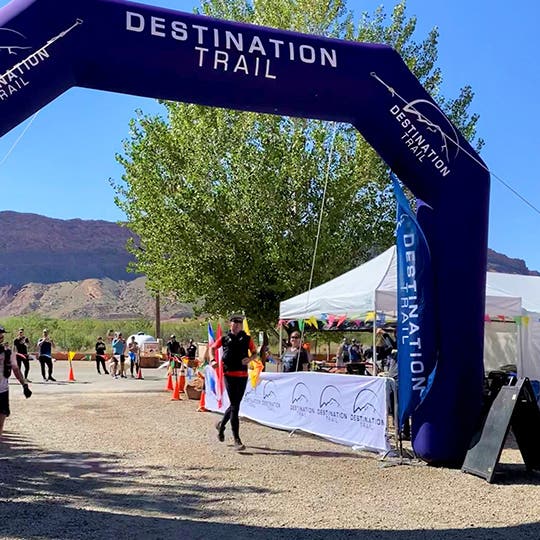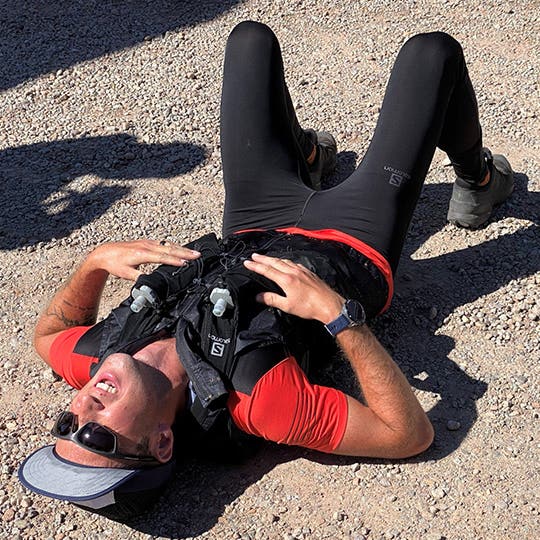Just when you thought 100-mile races were the most extreme race distance, 200-mile races are becoming more common. Destination Trail hosts the Bigfoot 200, Tahoe 200, and Moab 240, known as the Triple Crown. Team Injinji athlete Mike McKnight has an affinity for ultras of this distance and won the Moab 240 in 2021.


Will Mike McKnight Set a New Course Record?
Mike McKnight is no rookie. In 2016, he began training for his first 200-mile race, the 2017 Bigfoot 200. Since then, he has completed the Triple Crown twice. 2021 marked his third time racing in the Moab 240, coming in third his first time and winning the race on his second attempt. His goal in 2021 was to finish in under 50 hours to set the new course record, previously set by Courtney Dauwalter in 2017.
How to Train for a 200-Mile Race
Training for a race with this distance is no walk in the park, but Mike explains that “physically if you can do a 100, you can do a 200 based on the same weekly mileage during training, which can have peak weeks of 80 miles with 20k feet of elevation”.
To train for ultras, Mike prioritizes strength training and daily mobility exercises, with the support of a compression gun and boots. To mimic the racecourse, he also trains to endure sleep deprivation by running at night and very early in the morning, back to back.




200-Mile Ultramarathon Logistics
Not only does one have to prepare physically and mentally for this race, but logistically as well. There are several important factors that make a 200-mile race possible.
- Travel and accommodations
- Crew and pacers
- Supplies for before and after the race
- Drop bags and their locations on the racecourse
- Mandatory survival gear
- Sleep strategy
- Race day nutrition
How to Face Race Challenges
The Moab 240 began on Friday, October 8, 2021, in the La Sal Mountains. Runners had a cutoff time of 112 hours or 11 p.m. the following Tuesday. Due to poor weather, the Race Directors created a safer “Snow Course”, which reduced the elevation but preserved the race distance.
Although the course had been altered, Mike still decided to run the race with a sub-50-hour goal but the first day didn’t go as smoothly as anticipated. Mike experienced intense back pain “which caused me to spend 30-40 minutes getting worked on at a few aid stations. I almost quit a few times," he said, "but the volunteers and my wife kept me going.” Day two went better, but Mike shifted his goal to finish in the top three.
Mike McKnight's Rebound
For the majority of the race, Mike was tied for the lead and shared several miles with Jovica Spajic. They ran through slick rock, rain, hail, sand, and very technical terrain. At mile 170, Mike’s Coach, and Team Injinji Athlete, Jeff Browning, joined for pacing duties and would finish the last 70 miles with him.
Late in the second night, Jeff told Mike that he still had a chance for the course record and to pick up the pace. The last 30 miles were extremely difficult but Mike won the race in roughly 56 hours, making the 2021 Moab 240 his 5th 200-mile win.
The Moab 240 2021 Champion
No one wins an ultramarathon alone. It requires a community of pacers, volunteers, family, and friends. Looking back on the race, Mike recalled, “I'm so thankful for my wife and the aid station volunteers who kept me going."
To keep up with Mike McKnight, follow him on Instagram (@thelowcarbrunner). Try out his favorite Injinji socks and start planning your own running adventure.








